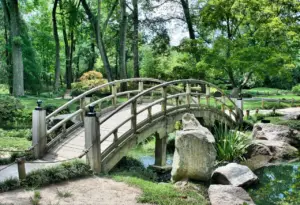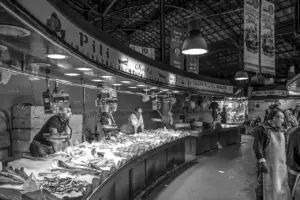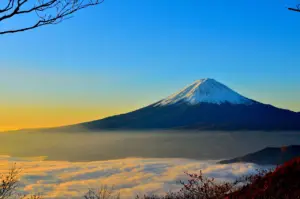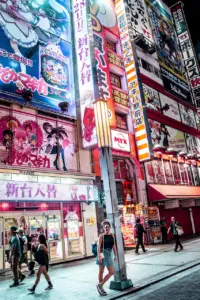Located in the northernmost region of Japan, Hokkaido is a picturesque island known for its stunning natural landscapes and rich cultural heritage. Hokkaido’s museums offer visitors a unique opportunity to explore the island’s diverse cultural and historical background.
From art and history to the indigenous Ainu culture, Hokkaido’s museums are a reflection of the island’s diverse past. In this article, we will explore some of the best museums Hokkaido has to offer.
From the Hokkaido Museum of Modern Art to the Asahiyama Zoo, we will take a closer look at each museum’s exhibits and collections. Whether you are an art enthusiast, history buff, or simply looking to learn more about Hokkaido’s cultural heritage, this article will provide you with an overview of Hokkaido’s best museums.
Key Takeaways
- Hokkaido has a variety of museums showcasing its rich cultural heritage and history, including the Hokkaido Museum of Modern Art, Historical Village of Hokkaido, Ainu Kotan, and Sapporo Beer Museum.
- Specific exhibits at these museums include works by renowned artists, themed exhibits showcasing daily lives of Ainu people and pioneers, and tasting rooms offering a variety of Sapporo Beer products.
- Interactive workshops are available at the Otaru Museum, where visitors can learn traditional crafts such as glassmaking, weaving, pottery, calligraphy, and traditional Japanese painting.
- Visitors can also learn about the critically endangered Ainu language and hear it spoken by native speakers, as well as observe local flora and fauna at various museums and centers throughout Kushiro.
The Hokkaido Museum of Modern Art
The Hokkaido Museum of Modern Art is an institution that showcases an extensive collection of contemporary artworks, ranging from paintings and sculptures to installations and multimedia pieces. Established in 1977, the museum has become one of the most prominent cultural landmarks in Hokkaido, attracting local and international visitors alike.
The museum’s permanent collection features works by many renowned Japanese artists, such as Yayoi Kusama, Yoshitomo Nara, and Takashi Murakami, as well as international artists such as Pablo Picasso, Salvador Dali, and Marc Chagall.
Apart from its permanent collection, the museum also hosts temporary exhibitions throughout the year, showcasing the works of emerging and established artists from Japan and around the world. The museum provides a platform for artists to showcase their works and encourages dialogue and exchange between artists and visitors.
The museum’s architecture is also noteworthy, as it blends seamlessly with the surrounding landscape, creating a serene and peaceful atmosphere for visitors to enjoy the artworks.
Overall, the Hokkaido Museum of Modern Art is a must-visit destination for art lovers and anyone interested in contemporary art.
The Historical Village of Hokkaido
The Historical Village of Hokkaido offers visitors a unique opportunity to experience life in the past. The village is home to authentic buildings and artifacts from Hokkaido’s history, allowing visitors to step back in time and immerse themselves in the region’s rich cultural heritage.
Traditional crafts and workshops are also available, providing a hands-on experience for visitors to learn about Hokkaido’s traditional way of life.
Experience Life in the Past
Immerse yourself in the history of Hokkaido through interactive exhibits, replicas, and artifacts that allow you to experience life in the past. The Historical Village of Hokkaido is a must-visit museum for those interested in the region’s history and culture.
The village is a replica of a 19th-century Hokkaido town, complete with traditional houses, shrines, and gardens that were once common in the area. Visitors can explore the village and participate in activities that were typical of the time period, such as woodcutting, farming, and weaving.
The museum also has themed exhibits that showcase the daily lives of Hokkaido’s indigenous Ainu people and the pioneers who first settled in the area. By experiencing life in the past, visitors gain a deeper appreciation for Hokkaido’s unique history and culture.
The village features over 50 buildings, including a courthouse, a police station, and a hospital. The Ainu exhibit highlights the traditions and customs of the indigenous people of Hokkaido, including their clothing, music, and spiritual beliefs. The museum offers workshops and demonstrations that allow visitors to learn traditional crafts, such as pottery and woodcarving.
Authentic Buildings and Artifacts
Visitors can step back in time and witness authentic buildings and artifacts that offer a glimpse into the past at the Historical Village of Hokkaido. This open-air museum is dedicated to preserving and showcasing the history and culture of Hokkaido.
The village consists of over 60 historic buildings, including farmhouses, schools, and traditional Japanese houses. Each building is carefully restored and furnished with authentic artifacts, giving visitors a sense of what life was like in Hokkaido during the 19th and early 20th centuries.
One of the highlights of the Historical Village of Hokkaido is the Ainu Kotan, a recreated Ainu village that showcases the traditional lifestyle and culture of the Ainu people, Hokkaido’s indigenous population. Visitors can explore the Ainu houses, see traditional crafts being made, and learn about the Ainu way of life.
The village also features a number of exhibits and demonstrations, including horse-drawn carriage rides, traditional crafts and trades, and a variety of performances and events throughout the year.
The Historical Village of Hokkaido offers a unique and immersive experience that is not to be missed for anyone interested in the history and culture of Hokkaido.
Traditional Crafts and Workshops
One can explore various traditional crafts and participate in workshops at the Historical Village of Hokkaido, providing an opportunity to learn about the skills and techniques that were used in the past.
Visitors can engage in activities such as straw craft, pottery, weaving, and dyeing, among others.
The skilled artisans and craftspeople at the village offer hands-on experiences that allow individuals to create their own works of art using traditional methods.
In the straw craft workshop, visitors can learn how to make various objects using straw, such as baskets, hats, and sandals.
The pottery workshop offers the chance to throw clay on a wheel and create unique pieces of pottery.
At the weaving and dyeing workshops, visitors can learn how to weave textiles and dye them using traditional techniques.
These workshops provide a unique and immersive experience for visitors, allowing them to gain a deeper understanding and appreciation of Hokkaido’s rich cultural heritage.
The Hokkaido Museum
The Hokkaido Museum is a prominent institution that showcases the rich history and culture of Hokkaido through its impressive collection of artifacts and exhibits. Established in 2015, the museum is located in the city of Sapporo and covers an area of over 54,000 square meters.
The museum’s permanent exhibition focuses on Hokkaido’s natural and cultural history, including exhibits on the Ainu people, Hokkaido’s indigenous population, as well as on the island’s early settlers, pioneers, and modern developments.
One of the most popular exhibits at the Hokkaido Museum is the Ainu Culture Gallery, which showcases the unique traditions, lifestyles, and art of Hokkaido’s indigenous people. The gallery features intricate wood carvings, woven textiles, and traditional clothing, as well as interactive displays that allow visitors to learn more about the Ainu language, religion, and customs.
The museum also hosts temporary exhibitions throughout the year, showcasing contemporary art, photography, and other cultural expressions from Hokkaido and beyond. With its diverse and engaging exhibits, the Hokkaido Museum is a must-visit destination for anyone interested in the rich history and culture of this unique region of Japan.
The Sapporo Beer Museum
Located in the city of Sapporo, the Sapporo Beer Museum offers a unique insight into the history and production of one of Japan’s most famous beers. As the birthplace of Sapporo Beer, the museum showcases the history of the brewery, from its founding in 1876 to its present-day global recognition.
Visitors can explore a variety of exhibits that detail the brewing process and the evolution of Sapporo Beer’s iconic brand, including displays of vintage brewing equipment, old advertisements, and packaging designs.
Moreover, the Sapporo Beer Museum provides visitors with an immersive experience that includes beer tastings and guided tours of the brewery. The museum’s tasting room offers visitors an opportunity to sample a variety of Sapporo Beer products, including limited edition brews that are only available at the museum.
Additionally, the museum offers guided tours of the brewery, where visitors can see firsthand the brewing process and learn about the different types of hops and barley used to create the unique flavors of Sapporo Beer.
Overall, the Sapporo Beer Museum is a must-visit destination for anyone interested in Japanese beer culture and history.
The Ainu Museum
Situated in a modern building in the outskirts of Sapporo city, the Ainu Museum offers an educational experience on the indigenous Ainu people of Hokkaido through exhibits and interactive displays. The Ainu are an indigenous group of people who have lived in Hokkaido, Sakhalin, and the Kuril Islands for thousands of years. The museum showcases the traditional lifestyle, culture, and history of the Ainu people through various exhibits such as clothing, tools, and hunting gear. Moreover, visitors can learn about the Ainu’s spiritual beliefs, music, and dance through interactive displays that allow visitors to experience the culture first-hand.
To further immerse visitors in the Ainu culture, the museum has a section that showcases Ainu art. The Ainu people have a rich tradition of creating intricate wood carvings and embroidery that reflect their spiritual beliefs and connection to nature. The museum also has a section dedicated to the Ainu language, which is considered a critically endangered language. Through interactive displays, visitors can learn basic Ainu phrases and hear the Ainu language spoken by native speakers. The Ainu Museum provides a unique opportunity to learn about the Ainu people and their culture, making it a must-visit destination for those interested in Hokkaido’s rich history and culture.
| Interactive Displays | Description | ||
|---|---|---|---|
| Virtual Reality Experience | Visitors can experience the Ainu lifestyle and culture through a virtual reality headset. | ||
| Traditional Dance Performance | Visitors can watch a live performance of the traditional Ainu dance. | ||
| Embroidery Workshop | Visitors can try their hand at Ainu embroidery and take home their own creation. | ||
| Language Learning Station | Visitors can learn basic Ainu phrases and hear the Ainu language spoken by native speakers. | Additionally, there is a museum exhibit showcasing traditional Ainu clothing, tools, and artwork, providing visitors with a comprehensive understanding of Ainu culture and history. |
The Kushiro City Museum
The Kushiro City Museum is an excellent place to learn about the history and culture of this bustling city in Hokkaido.
The museum features a range of exhibitions on topics such as the development of the city, the local flora and fauna, and the Ainu people, who have a rich cultural heritage in this region.
Visitors can enjoy interactive displays and exhibits that offer a fascinating insight into the unique culture and way of life of the Ainu people.
Exhibitions on Kushiro’s History and Culture
One can explore the rich history and culture of Kushiro through its engaging exhibitions. The Kushiro City Museum houses fascinating displays that showcase the city’s past, from its Ainu roots to its development as a hub for the fishing industry.
Visitors can learn about the traditional lifestyle of the Ainu, including their hunting and fishing practices, through exhibits that feature artifacts and photographs. The museum also has a section dedicated to the Meiji era, where visitors can see how the city transformed from a small village to a bustling town. The exhibits display early photographs of Kushiro, together with maps and original documents that illustrate the city’s growth and development.
Moreover, the museum has an exhibition that showcases the history of the fishing industry in Kushiro. The display features models of fishing boats and tools used by fishermen, as well as photographs that depict the fishing industry’s growth and success. Visitors can learn about the different types of fish caught in the area, as well as the unique techniques used by Kushiro fishermen. The exhibition also has information about the evolution of the fishing industry in Kushiro, from its humble beginnings to its current state as one of the most significant fishing ports in Japan.
Overall, the Kushiro City Museum’s exhibitions provide an in-depth look into the city’s fascinating history and culture.
Displays of Local Flora and Fauna
Visitors can witness the diverse range of flora and fauna native to Kushiro through captivating displays that showcase the region’s natural beauty. These displays are found in various museums and centers throughout the city, such as the Kushiro City Museum, the Kushiro Art Museum, and the Kushiro Marsh Observatory. In these locations, visitors can learn about the different species that inhabit the area, from the iconic red-crowned crane to the rare and endangered Ezo brown bear.
One example of a captivating display is the one found at the Kushiro Marsh Observatory, where visitors can observe the marshland ecosystem and its inhabitants. Here, a three-dimensional diorama of the marshland depicts the different layers of vegetation and the animals that call it home. A table displaying the different plant species found in the marshland, their scientific names, and their uses in traditional medicine and cuisine is also available for visitors to peruse. These displays provide a glimpse into the rich biodiversity of Kushiro and highlight the importance of conservation efforts to preserve the region’s natural heritage.
| Flora | Scientific Name | Uses |
|---|---|---|
| Yezo Sedge | Carex pachystylis | Used in traditional mats and baskets |
| Japanese Angelica | Angelica keiskei | Used in traditional medicine |
| Siberian Iris | Iris setosa | Ornamental plant |
Interactive Displays on the Ainu People
Interactively learning about the Ainu people and their culture is a unique experience that adds a deeper understanding of the indigenous people who have lived in Hokkaido for thousands of years.
The Ainu people have a distinct culture and language that is different from the Japanese culture.
The Hokkaido Museum, for instance, has an exhibit that showcases interactive displays on the Ainu people, where visitors can learn about their traditional way of life, their beliefs, and their crafts.
One of the interactive displays in the exhibit is a 3D map of an Ainu village that showcases the different aspects of their life, such as their hunting and fishing techniques, their clothing, and their homes.
Visitors can also use a touch screen to explore the history and culture of the Ainu people, from their origins to their present-day situation.
Additionally, the exhibit features a collection of Ainu artifacts, such as clothing, tools, and musical instruments, which provide a glimpse into their daily life and customs.
Overall, the interactive displays on the Ainu people in Hokkaido’s museums offer a fascinating look into the rich and diverse cultural heritage of the indigenous people of Hokkaido.
The Asahiyama Zoo
Located in the city of Asahikawa, the Asahiyama Zoo is a must-visit destination for those interested in experiencing the unique and interactive exhibits showcasing the diverse wildlife of Hokkaido. Established in 1967, the zoo has become famous for its innovative display methods that allow visitors to observe the animals up close and in their natural habitats. The zoo’s enclosures are designed to replicate the animals’ natural environment, providing them with ample space to roam and engage in their natural behaviors.
One of the most popular exhibits at the Asahiyama Zoo is the Penguin Parade, where visitors can watch the adorable birds waddling in formation. Another highlight is the Polar Bear Pavilion, which offers a unique underwater viewing experience. Visitors can watch the playful polar bears swim and play in the water from a clear acrylic tunnel that runs through the enclosure. The zoo also has exhibits featuring Hokkaido’s native animals, such as the Hokkaido brown bear, Yezo deer, and the Hokkaido red fox. With its innovative exhibits and engaging displays, the Asahiyama Zoo is a must-visit destination for animal lovers and families alike.
| Animal | Description | |||
|---|---|---|---|---|
| Penguin | The zoo has 4 species of penguins: the king, gentoo, rockhopper, and macaroni penguins. Visitors can watch them waddle and swim in their outdoor and indoor enclosures. | |||
| Polar Bear | The Polar Bear Pavilion offers a unique underwater viewing experience where visitors can watch the playful polar bears swim and play in the water. | |||
| Brown Bear | The zoo has a spacious enclosure for the Hokkaido brown bear where visitors can observe them in their natural habitat. | |||
| Yezo Deer | The Yezo deer is a native species of Hokkaido and can be observed at the zoo’s deer park. | |||
| Red Fox | Hokkaido is home to the Hokkaido red fox, a subspecies of the red fox. Visitors can observe them in their outdoor enclosure. | Ezo Owl | The Ezo owl, also known as the Blakiston’s fish owl, is one of the largest owl species in the world and can be seen at the zoo’s owl forest exhibit. |
The Otaru Museum
The Otaru Museum is a must-visit attraction for those interested in learning about the history and culture of this charming port city.
The museum features exhibitions that take visitors on a journey through Otaru’s past, showcasing its development from a small fishing village to a bustling commercial center.
Visitors can also explore displays of traditional crafts and artifacts, and participate in interactive workshops and demonstrations that provide a hands-on experience of the local culture.
Exhibitions on Otaru’s History and Culture
Exhibiting the rich history and cultural heritage of Otaru, the museums in Hokkaido offer a glimpse into the city’s past. One such museum is the Otaru Museum, which showcases various exhibitions on the city’s history and culture. Visitors can explore the different galleries and learn about the city’s development from a small fishing village to a bustling port town.
The exhibitions at the Otaru Museum are divided into three main themes: ‘Otaru’s History and Development,’ ‘Otaru’s Industries and Commerce,’ and ‘Otaru’s Cultural Heritage.’ Within each theme, visitors can find displays and artifacts that highlight different aspects of the city’s past.
For example, the ‘Otaru’s History and Development’ section has exhibits on the city’s early settlements and the growth of its fishing industry. The ‘Otaru’s Cultural Heritage’ section, on the other hand, features displays on traditional crafts such as glassblowing and music performances unique to Otaru.
Overall, the Otaru Museum is a great place for those interested in learning about the cultural and historical significance of this charming city in Hokkaido.
Displays of Traditional Crafts and Artifacts
Among the highlights of the Otaru Museum are the displays of traditional crafts and artifacts that showcase the city’s cultural heritage. Visitors can learn about the traditional crafts of the Ainu people, the indigenous people of Hokkaido, such as weaving, carving, and embroidery. The museum also features exhibits on the history of glassmaking in Otaru, which was once a major center for glass production in Japan. The displays include beautifully crafted glass objects, tools used in glassmaking, and photographs of the artisans who worked in the industry.
Additionally, the museum has a collection of everyday objects that provide a glimpse into the daily lives of the people of Otaru in the past. These objects include kitchen utensils, clothing, and tools used in agriculture and fishing. The museum’s exhibits on traditional crafts and artifacts offer a unique opportunity to learn about the history and culture of Otaru and the wider Hokkaido region. The use of the table enhances the experience, providing a visual aid that helps visitors better understand and appreciate the objects on display.
Interactive Workshops and Demonstrations
Visitors to the Otaru Museum can participate in interactive workshops and demonstrations, providing a hands-on experience of traditional crafts such as glassmaking and weaving. These workshops allow visitors to not only learn about the history and techniques behind these crafts but also to try their hand at creating their own masterpieces.
In addition to glassmaking and weaving, the museum also offers workshops on pottery, calligraphy, and traditional Japanese painting. During the workshops, visitors are guided by experienced artisans who are passionate about sharing their knowledge and skills. They provide step-by-step instructions, allowing visitors to create their own unique pieces while learning about the cultural significance of the craft.
The workshops are suitable for all ages, making it a great family-friendly activity. Overall, the interactive workshops and demonstrations at the Otaru Museum offer a unique and engaging way for visitors to experience traditional crafts and gain a deeper appreciation for Hokkaido’s rich cultural heritage.
- Visitors can learn about the history and techniques behind traditional crafts.
- Interactive workshops allow visitors to create their own unique pieces.
- Experienced artisans guide visitors through the process.
- Workshops are suitable for all ages.
- Visitors can gain a deeper appreciation for Hokkaido’s rich cultural heritage.
Frequently Asked Questions
What are the admission fees for each museum?
Admission fees for museums in Hokkaido vary depending on the specific museum and the type of admission selected.
For instance, the Hokkaido Museum of Modern Art charges 520 yen for adults and 260 yen for high school and university students, while elementary and junior high school students enter for free.
The Historical Village of Hokkaido, on the other hand, has an admission fee of 830 yen for adults, 620 yen for high school and university students, and 420 yen for elementary and junior high school students.
The Hokkaido Museum of Northern Peoples charges 600 yen for adults, 400 yen for high school and university students, and 200 yen for elementary and junior high school students.
Visitors can also purchase combination tickets that allow entry to multiple museums at discounted rates.
It is advisable to check the official websites of each museum for the latest information on admission fees and hours of operation.
Are there any special events or exhibitions currently happening at each museum?
Currently, each of Hokkaido’s best museums has special events or exhibitions on display.
The Hokkaido Museum of Modern Art is showcasing an exhibition titled ‘Tetsuya Ishida: Self-Portrait of Other’. This exhibition features the works of Tetsuya Ishida, a contemporary Japanese artist who explores themes of identity and society through his art.
The Historical Museum of Hokkaido is hosting an exhibition titled ‘A Century of Hokkaido: The People and the Land’. This exhibition explores the history and culture of Hokkaido over the past century, including its indigenous people, pioneers, and economic development.
The Hokkaido Museum is featuring an exhibition called ‘The World of Ainu: The Ainu and the Nature of Hokkaido’. This exhibition explores the Ainu, an indigenous people of Hokkaido, and their relationship with the natural environment.
Overall, each museum offers a unique and informative experience through its special events and exhibitions.
What are the hours of operation for each museum?
The hours of operation for each museum in Hokkaido vary depending on the establishment.
For instance, the Hokkaido Museum of Modern Art is open from 9:30 am to 5 pm every day except for Mondays and national holidays.
Meanwhile, the Hokkaido Museum of Northern Peoples is open from 9 am to 5 pm every day except for Mondays and the third Tuesday of each month.
Lastly, the Hokkaido Historical Village is open from 9 am to 4:30 pm daily except for Mondays and the year-end and New Year’s holidays.
Visitors are advised to check the official websites of these institutions to confirm their opening hours and any potential closures for special events or maintenance.
Is there parking available at each museum?
Parking facilities are available at most of the museums in Hokkaido. However, the availability of parking spaces may vary depending on the location and size of the museum.
Visitors are advised to check the museum’s website or contact the staff directly to confirm the availability of parking facilities. Some museums may have limited parking spaces, while others may have large parking lots. It is important to note that parking fees may apply at some museums, and visitors should be prepared to pay for parking if necessary.
Additionally, visitors are encouraged to use public transportation or walk when possible, as this can help reduce traffic congestion and promote sustainability.
Overall, visitors to Hokkaido’s museums will find a range of parking options available, but should plan ahead to ensure a smooth and enjoyable visit.
Are there any restrictions on photography or filming inside the museums?
While visiting museums, it is important to know whether there are any restrictions on photography or filming inside the premises.
In general, museums have their own policies regarding photography and filming, which may vary from one museum to another. Some museums allow photography and filming, while others may restrict it.
The restrictions may be due to copyright issues, preservation of artifacts, or privacy concerns. It is advisable to check with the museum staff or website before taking any photographs or videos.
In the case of Hokkaido’s best museums, it is recommended to inquire about their policies on photography and filming, as it may vary depending on the specific museum and exhibition.
Conclusion
Hokkaido, the northernmost island of Japan, is home to a plethora of museums that showcase its rich history, culture, and art.
The Hokkaido Museum of Modern Art, located in Sapporo, features a collection of contemporary Japanese and international art.
The Historical Village of Hokkaido, also in Sapporo, is an open-air museum that recreates life in Hokkaido during the Meiji and Taisho periods.
The Hokkaido Museum, located in the city of Sapporo, is a comprehensive museum that covers the history, culture, and nature of Hokkaido.
The Sapporo Beer Museum is a must-see for beer enthusiasts, where visitors can learn about the history of beer in Japan and the brewing process.
The Ainu Museum, located in Shiraoi, is dedicated to the Ainu people, the indigenous people of Hokkaido.
The Kushiro City Museum, located in Kushiro, showcases the history of the city and the Ainu people.
The Asahiyama Zoo, located in Asahikawa, is one of the most popular zoos in Japan and is known for its unique animal exhibits and interactive experiences.
The Otaru Museum, located in Otaru, showcases the history and culture of the town.
In conclusion, Hokkaido’s museums offer a diverse range of exhibits and experiences that cater to a wide range of interests.
Whether you are interested in art, history, culture, or nature, there is something for everyone in Hokkaido’s museums.
From the contemporary art at the Hokkaido Museum of Modern Art to the interactive exhibits at the Asahiyama Zoo, there is plenty to see and learn in Hokkaido.
If you are planning a trip to Japan, be sure to add Hokkaido’s museums to your itinerary for a unique and enriching experience.



















































































